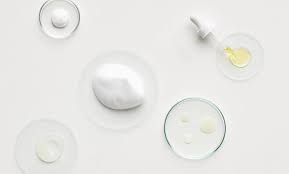
Should I use Hyaluronic Acid Before or After Tretinoin?
When it comes to skincare ingredient combinations, one of the most effective is retinol and hyaluronic acid. This is because both are able to deliver impressive skin results whilst working together to reduce the risk of retinol causing excessive dryness to the skin and allowing hyaluronic acid to keep the skin plumped and hydrated throughout the day.
Now you’re probably wondering why I’m talking about retinol when the title of this blog post mentions tretinoin, well believe it or not tretinoin is a name for the drug Retin-A and the active ingredient retinol. I know, it all sounds very technical, but not to worry as things will make a lot more sense once we have figured out whether you should use hyaluronic acid before or after tretinoin.
What does tretinoin do for your skin?
Tretinoin is used for treating acne, breakouts as well as other skin concerns such as signs of ageing, hyperpigmentation and loss of elasticity. Due to the fact it is an extremely potent ingredient you will often find it is obtained through prescription. Tretinoin works on the skin the same ways as retinol so needs to be introduced into your daily routine correctly. This is because skin experiences some dryness and flaking which is a common result when you first apply retinol to the skin. Once it has built its tolerance you’ll find the dryness subsides and you begin to see results. You can find out more about tretinoin and how it benefits the skin over on our blog.
Is there a difference between Retin-A and tretinoin?
Not really, it may feel confusing, but retin-A is the brand name for the drug tretinoin, yes just like the Beckham family have a brand name. It just happens that retin-A, or retinol is the name the ingredient is mainly called and recognised by. They are both a potent form of vitamin A which when used on the skin can combat all manner of skin concerns, from acne to fine lines. As I have already mentioned it is vital you use any form of retinol correctly and introduce it slowly into your routine. Start off by using it once a week and slowly make your way up to 3 times a week. If you are wanting to find out more, check out our blog post about retinol and its skincare benefits.
Can I use hyaluronic acid serum with Retin-A?
Absolutely! If anything, I would strongly suggest teaming these two powerhouse ingredients together. This will not only help keep your skin’s protective barrier remain fully functioning, with the correct levels of water enabling it to combat damage caused by daily exposure to free radicals, such as pollution, UV rays and other environmental skin stresses. When teaming these ingredients together you’ll find retin-a can work deep in the lower layers of the skin, reversing signs of ageing and problematic breakouts without the worry of the skin becoming too uncomfortable and dry thanks to the clever humectant properties of hyaluronic acid locking moisture into the skin.
Should I use hyaluronic acid before or after tretinoin?
Not really, many favour applying tretinoin before hyaluronic acid to ensure any dryness is avoided. However, when it comes to applying skincare, it is considered important to remember to follow the basic rule, and that is to apply products from thinnest to thickest. This will obviously have an effect on whether you apply hyaluronic acid before or after tretinoin. If I could however make the suggestion of applying hyaluronic acid before the potent tretinoin you will find your skin remains comfortable and happy. You’ll also find that because the layers of the skin are fully hydrated, they act more like a wet sponge absorbing any other product that are applied to the skin allowing them to penetrate into the lower layers of the skin.
How do you layer retinol and hyaluronic acid together?
As I have already mentioned layering skincare ingredients comes down to their consistency, remember, thinnest to thickest. The easiest way to remember the steps is serum, followed by oils and finally moisturisers. By applying skincare formulas this way you will find they are able to work on the skin and not battle against the physical barrier caused by the thicker consistencies. If you’re not wanting to follow my suggestion in the previous part, then the best way of layering retinol and hyaluronic acid is to first apply retinol to dry skin followed by a serum packed with hyaluronic acid. This will keep the skin hydrated and combat any potential dryness and flaking that as mentioned, is a common side effect when you first add retinol to your skincare routine.
Which is better hyaluronic acid or retinol?
Both of these ingredients carry a huge amount of reputation and popularity, they are both adored by beauty experts and enthusiasts alike. With this in mind, I’m tempted to say you’d be missing a trick if you don’t use both of these powerhouse ingredients in your daily routine.
Whilst retinol contains a huge amount of skin benefits that help to reduce the appearance of fine lines and wrinkles, as well as improving the appearance of skin texture, evens out skin tone and combating acne and breakouts. With retinol there is the slight downside to the short-term dryness it can cause to the skin, but as I have mentioned it does not last long and if used correctly will result in you having the best complexion.
As for hyaluronic acid, this humectant is hugely beneficial for the skin to remain hydrated and moisturised leaving the skin looking plumped and youthful. This is important to remember as quite often dehydration can not only lead to the skin looking older with visibly more fine lines on the surface, but with the protective barrier being notably weakened will lead to the skin becoming damaged from free radical exposure.
It really boils down to you and which concerns you have with your skin, however, seeing as though you are able to use both of these effective ingredients together, then why not reap the rewards and give your skin the best routine leaving it at its healthiest, happiest state.
If you have any questions about this topic, or anything else skincare related come and join us over on Instagram for more expert advice, giveaways and exclusive product launches.


